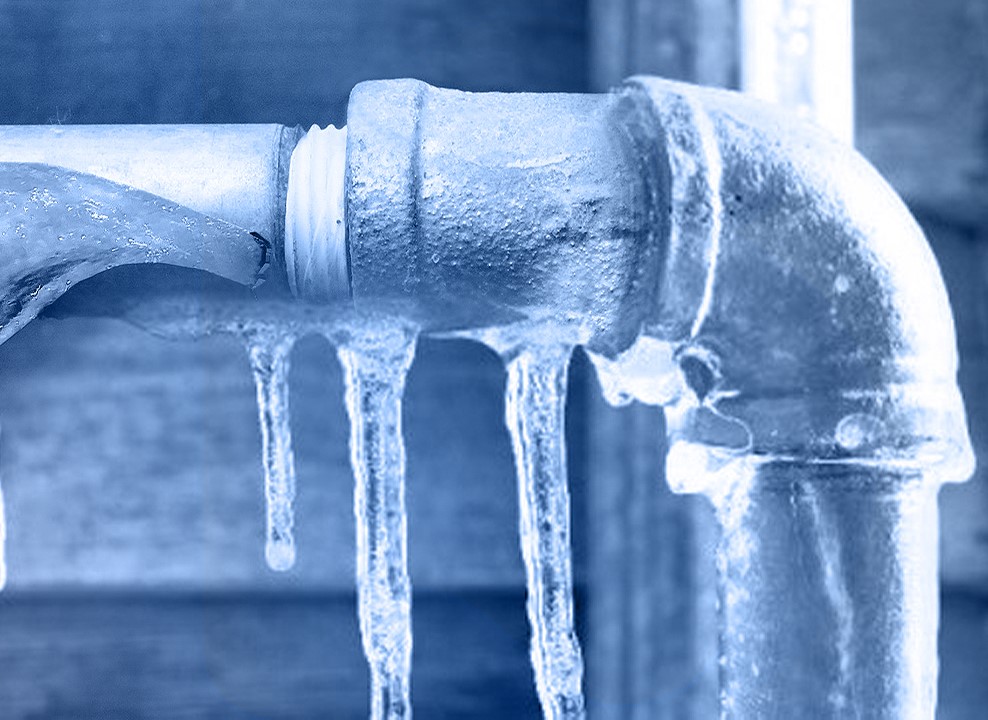Important Advice to Avoid Frozen Pipes in Cold Weather
Important Advice to Avoid Frozen Pipes in Cold Weather
Blog Article
Were you searching for critical info on Preventing and dealing with frozen pipes?

Cold weather can damage your plumbing, specifically by freezing pipes. Right here's exactly how to stop it from taking place and what to do if it does.
Intro
As temperatures drop, the threat of frozen pipelines rises, possibly causing expensive repairs and water damage. Understanding how to stop icy pipes is essential for home owners in chilly environments.
Comprehending Frozen Pipelines
What causes pipelines to ice up?
Pipelines ice up when revealed to temperature levels below 32 ° F (0 ° C) for prolonged periods. As water inside the pipes freezes, it increases, putting pressure on the pipe walls and possibly triggering them to burst.
Risks and problems
Icy pipelines can result in water system disruptions, residential or commercial property damage, and pricey repairs. Burst pipes can flood homes and cause extensive structural damage.
Signs of Frozen Piping
Identifying frozen pipes early can prevent them from rupturing.
How to identify frozen pipes
Search for decreased water circulation from taps, unusual smells or sounds from pipelines, and visible frost on subjected pipelines.
Prevention Tips
Insulating susceptible pipes
Cover pipes in insulation sleeves or utilize heat tape to safeguard them from freezing temperature levels. Concentrate on pipelines in unheated or outside areas of the home.
Home heating techniques
Maintain indoor spaces effectively heated up, specifically areas with plumbing. Open cupboard doors to enable warm air to flow around pipelines under sinks.
Securing Outdoor Pipes
Garden pipes and outside taps
Detach and drain garden hoses before winter. Mount frost-proof spigots or cover outdoor faucets with shielded caps.
What to Do If Your Pipelines Freeze
Immediate actions to take
If you presume icy pipes, maintain faucets open up to eliminate pressure as the ice melts. Use a hairdryer or towels taken in warm water to thaw pipes gradually.
Long-Term Solutions
Structural changes
Think about rerouting pipelines far from exterior walls or unheated locations. Add added insulation to attic rooms, cellars, and crawl spaces.
Upgrading insulation
Buy top quality insulation for pipelines, attic rooms, and walls. Proper insulation helps maintain consistent temperatures and lowers the danger of frozen pipes.
Verdict
Preventing frozen pipelines needs positive steps and quick actions. By understanding the causes, indications, and safety nets, house owners can safeguard their pipes during cold weather.
5 Ways to Prevent Frozen Pipes
Drain Outdoor Faucets and Disconnect Hoses
First, close the shut-off valve that controls the flow of water in the pipe to your outdoor faucet. Then, head outside to disconnect and drain your hose and open the outdoor faucet to allow the water to completely drain out of the line. Turn off the faucet when done. Finally, head back to the shut-off valve and drain the remaining water inside the pipe into a bucket or container. Additionally, if you have a home irrigation system, you should consider hiring an expert to clear the system of water each year.
Insulate Pipes
One of the best and most cost-effective methods for preventing frozen water pipes is to wrap your pipes with insulation. This is especially important for areas in your home that aren’t exposed to heat, such as an attic. We suggest using foam sleeves, which can typically be found at your local hardware store.
Keep Heat Running at 65
Your pipes are located inside your walls, and the temperature there is much colder than the rest of the house. To prevent your pipes from freezing, The Insurance Information Institute suggests that you keep your home heated to at least 65 degrees, even when traveling. You may want to invest in smart devices that can keep an eye on the temperature in your home while you’re away.
Leave Water Dripping
Moving water — even a small trickle — can prevent ice from forming inside your pipes. When freezing temps are imminent, start a drip of water from all faucets that serve exposed pipes. Leaving a few faucets running will also help relieve pressure inside the pipes and help prevent a rupture if the water inside freezes.
Open Cupboard Doors
Warm your kitchen and bathroom pipes by opening cupboards and vanities. You should also leave your interior doors ajar to help warm air circulate evenly throughout your home.

Hopefully you liked our article on Preventing and dealing with frozen pipes. Thanks for taking time to browse our article. In case you enjoyed reading our post if you please remember to share it. Thanks for being here. Revisit us soon.
Pricing Report this page